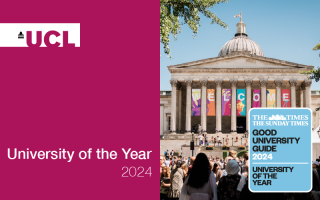Supervisors: Professor Andrew Copp, Professor Nick Greene, Dr Lena Serghides (University of Toronto)
Determining the embryonic mechanisms of birth defects after pregnancy exposure to anti-retroviral drugs for maternal HIV infection
Background:
Women who are HIV-positive are prescribed antiretroviral therapy (ART) in pregnancy to prevent vertical HIV transmission to the baby [1]. ART carries the risk of potentially damaging the developing fetus. Dolutegravir (DTG), an HIV integrase strand transfer inhibitor, is an effective ART component, and is used in pregnancy. However, in 2018-19, initial data analysis from a study of DTG usage in Botswana revealed several cases of neural tube defects (NTDs: e.g. anencephaly, spina bifida) among pregnancies exposed to DTG from conception, representing a significant increase in prevalence compared with the population average [2]. Hence, further research is urgently needed to determine whether, and how, DTG may harm the developing fetus.
Aims/Objectives:
This project aims to determine the effects of DTG on neural tube closure in cultured mouse embryos, by comparison with embryos exposed during mouse pregnancy. The student will determine:
- The extent and rate of closure in different regions of the body axis, +/- DTG treatment.
- Interactions of DTG treatment with genetic changes known to predispose to NTDs.
- Mechanism of closure defects at embryo cell and tissue levels, by confocal-based methods.
Methods:
This PhD project is based in a lab with long experience of genetic and developmental biology studies of neural tube closure and NTDs [3]. The student will learn the method of whole embryo culture, by which DTG can be administered directly to the embryo [4]. Genetic mutant mice, e.g. with the Vangl2Lp mutation which predisposes to NTDs, will be treated alongside wild-type embryos, to study DTG-gene interactions which may be of particular relevance in human pregnancy. The mechanisms by which DTG may affect neural tube closure will be studied by determining: (i) Tissue structure and cytoskeletal distribution - by whole-mount staining with phalloidin (F-actin) and anti-non-muscle myosin; (ii) Cell proliferation - by phospho-histone H3 immunostaining to reveal mitotic cells, with calculation of cell proliferation rates; (iii) Cell death - by anti-activated caspase 3 immunostaining for cells in apoptosis; (iv) Gene expression analysis - depending on results of (i)-(iii). Confocal-based methods of analysis will be used, as in previous studies [5].
Collaboration with University of Toronto:
The supervisor in Toronto (Dr Lena Serghides) is highly experienced in studies of anti-HIV drugs in pregnancy and has supervised more than 20 research fellows and students. To relate the findings from embryo culture to in vivo pregnancy, the student will travel to Toronto to collect and analyse neurulation-stage embryos (E8.5-E10) from litters treated in vivo. The lab in Toronto has so far analysed treated litters only at fetal stages, when NTDs have been recognised, specifically after DTG treatment at dose levels that produce similar blood concentrations as in humans. The mechanistic studies (above) will be applied to in vivo and cultured embryos in parallel.
Timeline:
The first 18 months of the PhD will be spent in the lab at ICH, learning and carrying out the embryo culture and genetic studies. Then 6-9 months will be spent in the Toronto lab, to collect neurulationstage
embryos after DTG treatment of the pregnant female, and to begin comparisons with cultured embryos. The final 9-12 months will be spent in the ICH lab, completing analysis and writing the PhD.
References:
1. Bailey et al. Lancet HIV 5, e457-e467 (2018).
2. Zash et al. N. Engl. J. Med 381, 827-840 (2019).
3. Copp et al. Nat Rev Dis Primers 1, 15007 (2015).
4. Culshaw et al. Birth Defects Res 111: 1165-1177 (2019).
5. Galea et al. Proc Natl Acad Sci U S A 114, E5177-E5186 (2017).
 Close
Close



